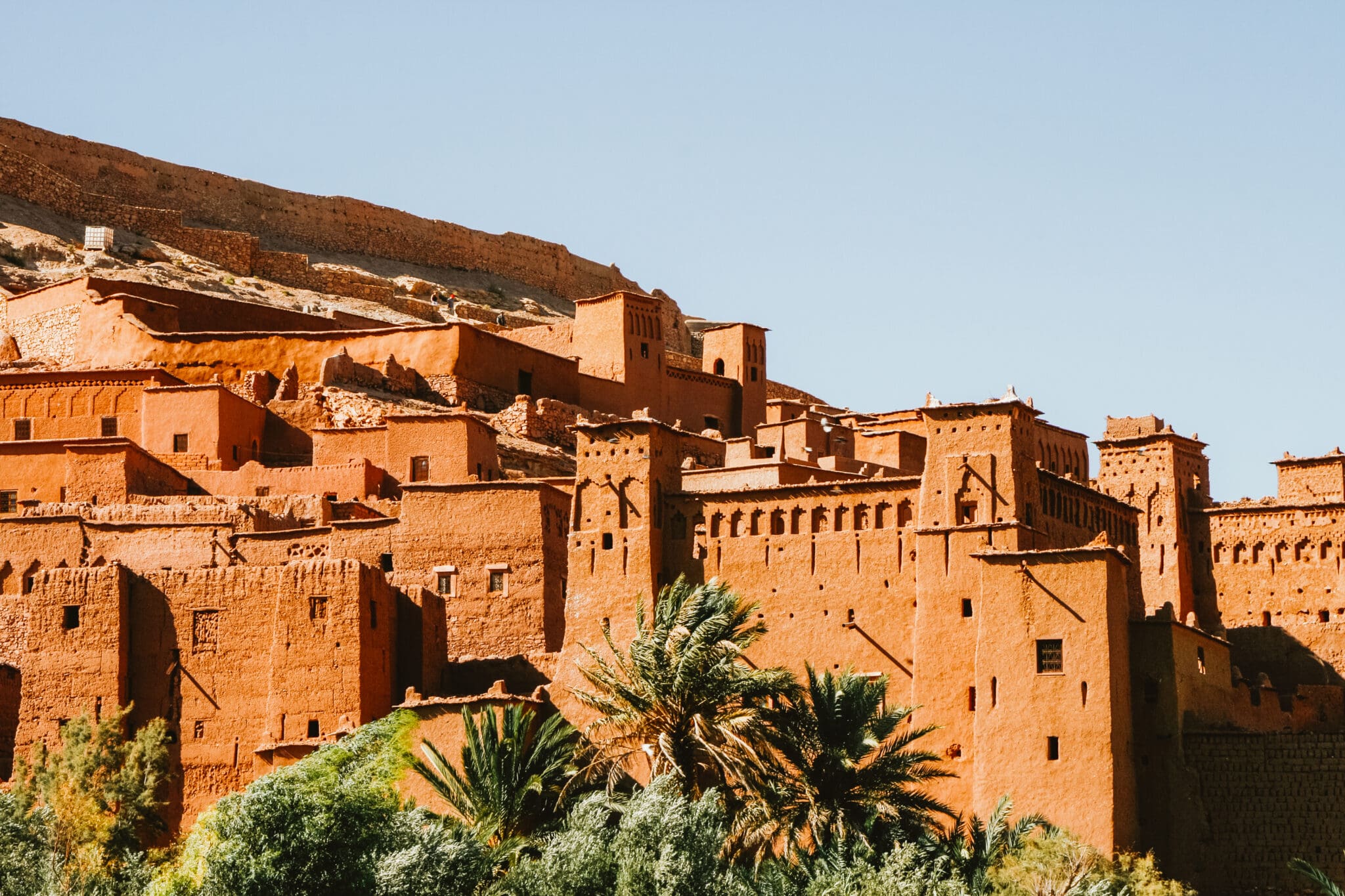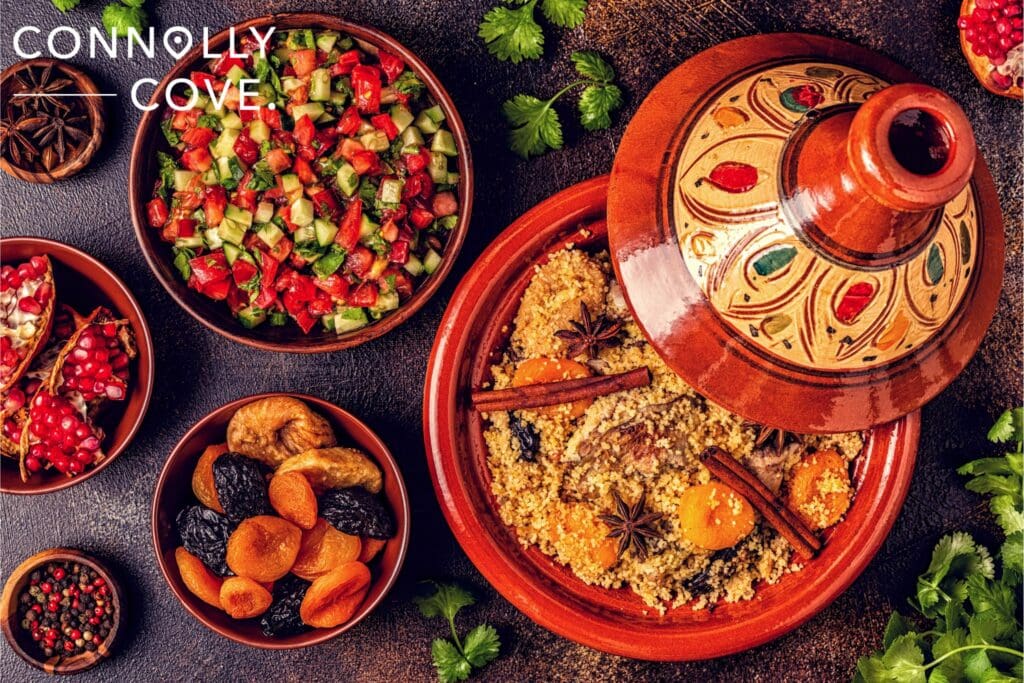Top Things To Do in Tangier: Exploring the Pearl of the North!

Updated On: April 17, 2024 by Esraa Mahmoud
Tangier, Morocco, a city where the Mediterranean Sea meets the Atlantic Ocean, is a vibrant tapestry of history, culture, and natural beauty. Nestled between Europe and Africa, it has captivated the imaginations of travellers and artists for centuries, from the Romans and Phoenicians to Matisse and Hemingway.
Tangier is a gateway to further exploration of Morocco’s treasures. Take a day trip to the charming blue city of Chefchaouen, nestled in the Rif mountains. Hike through the Akchour waterfalls, a hidden oasis of cascading water and lush greenery. Or, venture into the Sahara Desert, experiencing the magic of sand dunes and starry nights.
Whether you’re seeking historical immersion, sun-kissed beaches, or a taste of the exotic, Tangier has something to offer everyone.
What Are the Best Things to Do in Tangier?
Tangier, poised on the edge of the Atlantic and the Mediterranean, is a kaleidoscope of experiences waiting to be explored. From its ancient Medina to its sun-kissed beaches, and from its vibrant souks to its serene gardens, Tangier offers something for every traveller.
Ascending to Tangier’s Crown: A Journey through the Kasbah’s Whispers
Tangier, Morocco, thrums with the echoes of ancient empires and contemporary life. Yet, perched high above the city’s vibrant pulse, whispers of a glorious past reside within the Kasbah. This fortified citadel, crowned with panoramic views, beckons travellers to embark on a journey through Tangier’s rich tapestry.
The Kasbah of Tangier is a testament to the city’s rich history, a labyrinthine fortress atop the cliffs overlooking the Strait of Gibraltar. Nestled within the ancient walls of the medina, this historic site is a captivating blend of Moroccan and Andalusian influences, where time seems to have woven its narrative into the very fabric of the stone.
The Kasbah, with its imposing stone walls and narrow, winding alleys, is a stark contrast to the vibrant chaos of the Medina below. As you ascend, the city unfolds like a vibrant tapestry, the Atlantic Ocean shimmering in the distance and the bustling harbour adding a hum of energy to the air.
At the heart of the Kasbah lies Dar el-Makhzen, the former palace of the Sultan. Stepping through its grand entrance is like stepping back in time into a world of opulence and intrigue. Intricate tilework adorns the walls, whispering tales of royal feasts and whispered secrets.
The courtyards, bathed in sunlight, echo with the faint laughter of concubines and the murmur of advisors. Here, you can almost hear the clinking of swords and the rustle of silk robes, a reminder of the Kasbah’s days as the seat of power.
No visit to the Kasbah is complete without delving into its rich history at the Kasbah Museum. Housed within the Dar el-Makhzen, this museum is a treasure trove of artefacts that tell the story of Tangier from its Berber roots to its cosmopolitan present. Roman coins, Ottoman pottery, and intricate tapestries paint a vivid picture of the city’s past.
Wander through the exhibits, and you’ll encounter relics from the American Legation, a testament to Tangier’s role as a meeting point for international intrigue. Each artefact is a piece of the puzzle, whispering tales of forgotten rulers, daring explorers, and the vibrant tapestry of life that has played out within these walls.
The American Legation Museum
The American Legation Museum in Tangier, Morocco, is a unique and historic site that holds significant cultural and diplomatic importance. Established in 1821, the American Legation in Tangier is the first property acquired abroad by the United States government, making it a symbol of America’s early diplomatic presence in the region.
The building itself is a fascinating blend of Moroccan and European architectural styles, reflecting the cultural exchange that has characterized Tangier throughout its history. Located in the heart of the medina, the Legation is a testament to the longstanding relationship between the United States and Morocco.
One of the primary purposes of the American Legation in Tangier was to serve as a diplomatic outpost and consulate. Its strategic location overlooking the Strait of Gibraltar made it a crucial centre for American consular and diplomatic activities in North Africa. Over the years, the Legation played a vital role in facilitating trade, protecting American citizens, and fostering diplomatic relations between the United States and Morocco.
Visitors to the American Legation Museum have the opportunity to explore the rich history of Tangier and its role in American diplomacy. The exhibits include displays of historical documents, photographs, maps, and artefacts that highlight the interactions between diplomats, traders, and local communities. The museum also houses a research library with a focus on North African studies.
One notable feature of the museum is the Paul Bowles Wing, named after the American expatriate writer and composer Paul Bowles, who spent much of his life in Tangier. The wing celebrates Bowles’s contributions to literature and the arts, adding an additional layer of cultural significance to the museum.
Relax on the Beach

The Mediterranean sun drapes Tangier in a golden veil, and nestled within its folds are beaches whispering promises of relaxation, adventure, and family fun. Whether you seek the vibrant buzz of Plage Dalia or the serene embrace of Plage des Sablettes, Tangier’s shoreline unfolds a tapestry of experiences woven with sun-kissed sands, glistening waves, and endless possibilities for seaside bliss.
First on the list of beaches not to be missed in Tangier is the beach of Dalia, a vibrant pulse that beats within Plage Dalia. Imagine a crescent of golden sand where the Mediterranean sun paints warm hues on the water, creating an inviting turquoise canvas. Laughter dances on the breeze as families picnic under colourful umbrellas, building sandcastles that rival fairy-tale fortresses. Children shriek with delight as they chase the retreating waves, their footprints etching fleeting stories in the smooth sand.
If Dalia is a vibrant symphony, Plage des Sablettes is a serene serenade. Tucked away in a sheltered bay, this crescent of fine, golden sand offers a haven for those seeking tranquillity. Here, the waves lap gently at the shore, whispering secrets to the sun-warmed rocks. Couples stroll hand-in-hand, their footprints the only marks on the pristine sand. Children build intricate sandcastles, their laughter echoing softly in the still air.
This is a beach for those who seek solace in the embrace of the sea. Sink your toes into the warm sand, let the gentle waves massage your worries away, and close your eyes to soak up the sun’s warmth. Breathe in the salty air, hear the soothing rhythm of the ocean, and let the world melt away.
Cafe Hafa: Where Time Meets Tangier’s Soul on a Clifftop Perch
In Tangier, Morocco, where the sun-baked streets whisper tales of empires and artists, Cafe Hafa stands as a proud sentinel, its weathered facade bearing the weight of a century’s stories. More than just a cafe, it’s a living monument, a vibrant tapestry woven from history, breathtaking views, and the intoxicating aroma of mint tea.
Built in 1921, as the faded inscription above its entrance proudly declares, it has witnessed the ebb and flow of Tangier’s soul, a silent observer of bohemian revelry, literary exchanges, and hushed political conversations.
Cafe Hafa’s heartbeat is its location. Perched precariously on a clifftop overlooking the vast expanse of the Mediterranean, it offers a panorama that steals your breath. The turquoise sea stretches towards the horizon, dotted with sailboats that dance in the sunlight.
Whitewashed houses cling to the hillside, their rooftops cascading down like a sea of terracotta tiles. The air hums with the cries of gulls and the rhythmic crash of waves against the rocks, a symphony of nature’s grandeur.
Stepping into Cafe Hafa is like stepping back in time. The tiled floor, worn smooth by countless footsteps, tells stories of artists and writers who once sought solace in its dim light.
The faded photographs lining the walls whisper of a bygone era, of Tangier’s allure for international icons like Paul Bowles, Tennessee Williams, and William Burroughs. The air is thick with the aroma of freshly brewed mint tea, a fragrant embrace that welcomes you into the fold.
Beyond the sensory experience, Cafe Hafa offers a glimpse into the heart of Tangier’s cultural scene. Local artists often gather here, sharing stories and dreams over steaming cups of coffee. Musicians strum their guitars in the corner, filling the air with melancholic melodies that speak of love, loss, and the beauty of the city.
Tangier’s Medina: A Labyrinthine Embrace Where Time Whispers and Stories Live
Tangier’s Medina is more than just a neighbourhood; it’s a living, breathing history book, a maze of narrow alleys where time whispers secrets and stories cling to every corner. Spilling down the slope from the Kasbah in the north, it twists and turns like a serpent, its gorge-like alleys offering fleeting glimpses of the azure Bay of Tangier, a shimmering jewel glimpsed through the urban tapestry.
Going into the Medina is like crossing a threshold into another world. The cacophony of the modern city fades away, replaced by the symphony of the Medina’s own heartbeat. The narrow alleys, some so narrow that two can barely pass, wind and twist in an enigmatic dance, their worn stone steps whispering tales of countless footsteps that have come before.
Sunlight struggles to penetrate the maze, filtering through overhanging balconies and casting dappled patterns on the mosaic-tiled walls. These alleyways, like gorge-like canyons, offer fleeting glimpses of the sparkling Bay of Tangier, a tantalising promise of the sun-soaked world beyond the labyrinth.
The heart of the Medina beats in its souks (markets), vibrant marketplaces overflowing with a kaleidoscope of colours and textures. Here, hand-woven Berber rugs jostle for space with piles of leather slippers, intricately carved wooden boxes, and pyramids of glistening spices.
Merchants, eyes twinkling with mischief, weave their tales and entice customers with their practised charm. Haggling is not just a necessity; it’s an art form, a dance of words and smiles, a chance to connect with the soul of the Medina.
Cap Spartel: Where Oceans Collide and Myths Unfold
Tangier, Morocco, a city where history whispers from sun-baked walls and the Mediterranean Sea kisses the Atlantic, holds a jewel at its northwestern edge – Cap Spartel. Cap Spartel is a scenic and historic landmark in Tangier, Morocco. It is the point where the Mediterranean Sea and the Atlantic Ocean meet, and it offers a stunning view of the Strait of Gibraltar and the coast of Spain.
Cap Spartel is located about 12 km west of Tangier, and it is the most northwestern point of Africa. Cap Spartel has a lighthouse that was built in 1864 by Sultan Muhammad IV, who wanted to improve the navigation and safety of the ships that passed through the strait. The lighthouse is 32 meters high and has a white tower with a red lantern. It is still operational and can be visited by tourists.
The place has witnessed and influenced many events and cultures throughout history. It was a strategic location for the Phoenicians, the Romans, the Vandals, the Byzantines, the Arabs, the Portuguese, the Spanish, the English, and the Moroccans, who all left their marks on the landscape and the architecture. It was also a place that attracted and inspired many artists, writers, and travellers, such as Paul Bowles, William S. Burroughs, Henri Matisse, Jean Genet, and Jack Kerouac.
Cap Spartel is a place that offers many activities and attractions for visitors, such as hiking, biking, horse riding, golfing, surfing, fishing, boating, swimming, and sunbathing. It also has many cafes, restaurants, hotels, and shops that cater to different tastes and budgets. It is a place that combines the beauty of nature, the charm of culture, and the thrill of adventure.
Indulge in Local Delights

Tangier offers a feast for the eyes and a banquet for the senses. But beyond the dazzling sights and ancient whispers, a delectable symphony awaits in the realm of local cuisine. Prepare to embark on a 500-word culinary journey through Tangier’s vibrant markets, smoky kitchens, and sun-drenched terraces, where flavours explode, spices dance, and every bite tells a story.
Forget Michelin-starred restaurants and trendy cafes. Tangier’s culinary magic unfolds in the bustling streets, tucked away in hidden alleyways, and simmering in the kitchens of local families. The air is thick with the intoxicating aroma of spices — cumin, coriander, saffron, and paprika— their pungent notes mingling with the smoky sweetness of grilling meats and the sweet perfume of fresh mint. Every corner becomes a sensory feast, beckoning you to explore with your nose and taste buds as your guide.
Start with a visit to the bustling Grand Socco, the city’s main square. Here, amidst the cacophony of vendors and the vibrant colours of fresh produce, we find our first bites of bliss. Sample warm, fluffy mssemen flatbreads dipped in fragrant harissa sauce, savour the savoury crunch of deep-fried briwat pastries filled with spiced vegetables or meat, and quench your thirst with a steaming glass of mint tea, a sweet and refreshing welcome to the world of Moroccan cuisine.
Venturing deeper into the labyrinthine medina, and you will stumble upon hidden gems—small, family-run restaurants serving up generations-old recipes. Here, tagines, the undisputed kings of Moroccan cuisine, reign supreme. Tender chicken simmers in a fragrant broth of preserved lemons and olives, while fragrant lamb melts in your mouth with the sweetness of caramelised onions and apricots. Each bite is a symphony of spices, textures, and slow-cooked perfection.
But Tangier’s culinary repertoire extends far beyond tagines and pastries. For adventurous palates, there are tangia, a slow-cooked meat stew simmering in smoky paprika and black pepper, and Bastilla, a flaky pastry filled with pigeon meat and almonds, a sweet and savoury explosion that surprises and delights.
No culinary journey is complete without a sweet finale. Tangier offers a plethora of delights to satisfy your cravings. Sticky baklava, its layers of filo pastry soaked in honey and studded with nuts, is a classic. For a lighter option, try msemen slathered with honey and sprinkled with sesame seeds, or indulge in sweet pastries like chebakia, their intricate shapes and honey glaze, a feast for the eyes and the palate.
Tangier is not just a destination; it’s an experience. It’s a city that whispers ancient tales in the breeze, paints vibrant canvases on bustling streets, and invites you to lose yourself in the dance of its vibrant heart. From the sun-kissed beaches to the labyrinthine medina, from the aroma of spices to the rhythmic waves crashing against the cliffs, Tangier offers a kaleidoscope of experiences that will forever be etched in your memory.






